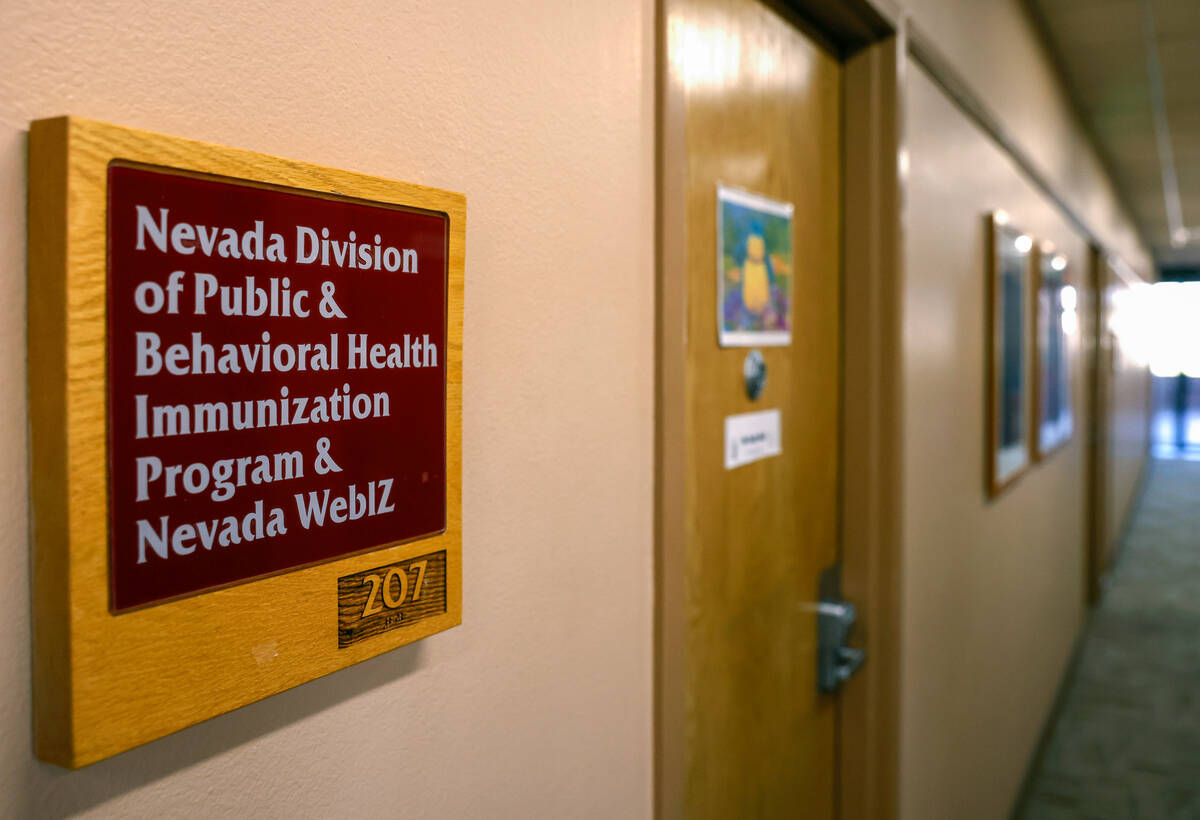28 percent of Nevada’s budget at risk with federal cuts
Nevada’s largest share of funding comes from the federal government, and with efforts to curb spending in Washington, D.C., those pending cuts could affect programs in the Silver State.
A Nevada nonpartisan policy research center released a report last week detailing how much federal funding the Silver State receives and the programs it covers, raising questions about programs’ sustainability.
The Kenny Guinn Center for Policy Priorities found that 27.7 percent of Nevada’s 2023-2025 funding came from federal sources, or roughly $14.8 billion out of the $53.4 billion state budget.
Most of those federal dollars support programs within the Department of Health and Human Services. About 65 percent of the department’s budget goes to the state and federally funded Medicaid program, which provides coverage to nearly 822,000 Nevadans, according to the report.
Federal funding also supports at least 40 percent of the budgets for other state agencies, including the Department of Agriculture and Veterans Services. Federally-funded programs include the children’s health insurance program Nevada Check Up and the Summer Electronic Benefit Transfer Program, which provides food to approximately 310,000 children during summer months.
The report’s authors conclude that changes at the federal level to funding received by state and local agencies present a challenge to Nevada policymakers over the continuation of the programs that rely on federal funding.
President Donald Trump and Congressional Republicans have prioritized cutting federal spending to curb the nation’s $1.8 trillion deficit and make room for extending Trump’s tax cuts and enacting his other policy proposals.
Already Nevada has seen some impacts, including cuts to funds for food banks, the announced closure of a health service office for rural Native Americans, and the planned move of a Social Security Administration office into a federal space.
A Medicaid expansion program in Nevada could also be on the chopping block.
A House Republican budget plan directs the House Energy and Commerce Committee — which oversees Medicaid — to find ways to cut the federal deficit by at least $880 billion over the next decade. Though Republicans said they have no intention of cutting Medicaid, Democrats claim it would be impossible to meet that $880 billion goal without cutting the service that provides free health care to low-income people.
Other budget proposals from Congressional Republicans call for between $1 billion and $2 trillion in cuts.
What could happen to Nevada programs if federal funds wane?
Legislators recently passed the halfway point of Nevada’s 120-day legislative session, where they’ve been hearing bills that may require additional funds that the state may not have the ability to spend if federal cuts go through.
Nevada lawmakers could meet again for a special session if Republicans in Congress successfully implement the cuts, according to Senate Majority Leader Nicole Cannizzaro.
“The hard reality is that if these cuts happen, the Governor will be calling the Legislature into special session later this year to present his plan to kick people off their health care and cut services for working families, seniors, students, and people who need food assistance,” Cannizzaro, D-Las Vegas, said in a statement.
She urged Nevada Republicans to speak out against the administration’s plans and stop the cuts before they’re enacted.
Senate Minority Leader Robin Titus, R-Wellington, thinks a special session can be avoided.
The state has known these cuts could be coming, since Trump campaigned on them, she said. Titus and other legislators have spent the session looking at additional funding requests and which ones are the most necessary while making sure agencies spend all the money appropriated to them through the American Rescue Plan Act.
Nevada will see an impact with federal cuts, but it is prepared to cover programs affected that are necessary through the state’s Rainy Day Fund, Titus said.
“We don’t want kids to go hungry; we don’t want people to go without health care, and the people that are truly in need of these services, we’re going to figure out how we can take care of these folks,” she said.
Nevada’s Rainy Day Fund, which is projected to reach $1.6 billion by the end of the 2025 to 2027 biennium, would cover three months of operating expenditures if Nevada’s revenues were a net-zero. The financial reserve can be tapped into during revenue shortfalls, unexpected deficits or if the Nevada Legislature deems appropriate. Funding in the account can’t exceed 26 percent of operating appropriations, and any allocation would be one-time appropriation.
Contact Jessica Hill at jehill@reviewjournal.com. Follow @jess_hillyeah on X.
A report from the Guinn Center found nearly 28 percent of Nevada's budget comes from federal funds and provides support for health and human services programs. With looming cuts, legislators may have to meet to deal with a smaller budget.


















